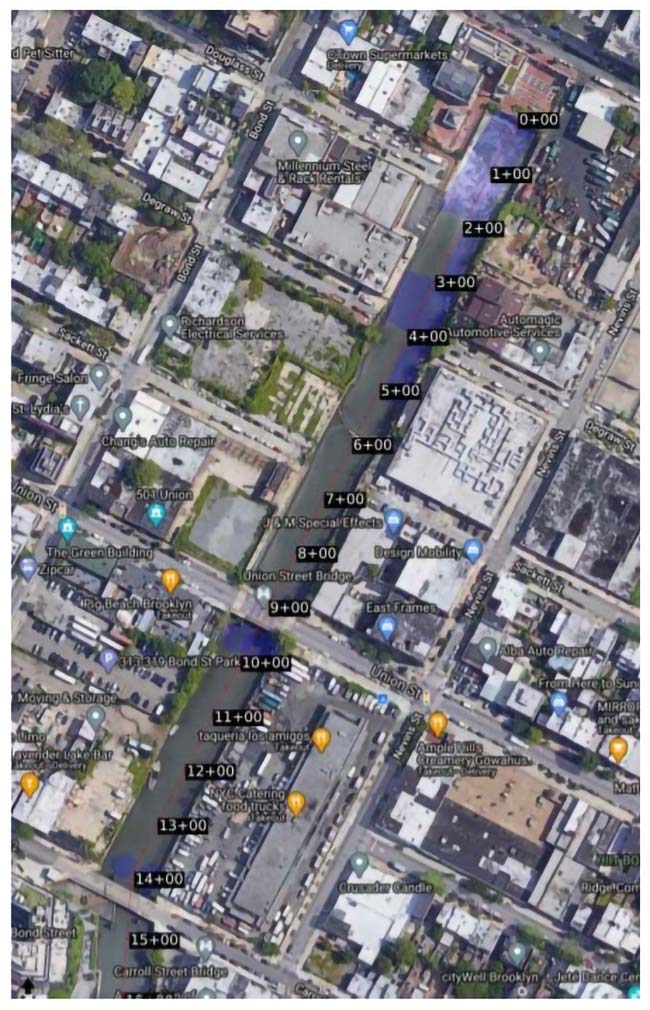INTRODUCTION
Dredged material is processed according to the Level 1 Archaeological Monitoring protocol outlined in the draft Cultural Resource Monitoring Plan (revised September 2020). This protocol calls for dredged soft sediments to be placed directly into barges, floated to the processing facility, and screened over bars on a vibrating platform. Items removed during the vibratory screening process are then sorted by trained personnel as per the draft Cultural Resource Monitoring Plan. Items of potential interest (possible artifacts or objects of local interests) are placed in a separate stockpile and photographed for archaeologists to review. These items are then placed in a holding area for archaeologists to inspect. To date, the vast majority of the recovered items consisted of modern debris and timbers.
RESULTS
The archaeologist conducted a scheduled site visit on 3/19/21 to review the recovered items in person with the assistance of a dredge material processing facility machine and operator to sort through stockpiled items. Photographs were taken of stockpiled items (Photos 1 – 11).
The materials to be reviewed were spread by machine on a flat hard surface to allow for an archaeologist to clearly review them (Photograph 1). Any item of potential interest was separated, rinsed and assessed. The reviewed material consisted of unsorted and muddy debris comprised of concrete fragments, rocks, large and small pieces of wood and timber (Photograph 2, 3, 4 and 5), miscellaneous metal (Photograph 6), tires and car parts. Two items were recovered at the canal site and were delivered, cleaned and put to the side at the dredge material processing facility prior to the site visit. The first item was a wooden wagon wheel, 55” in diameter, with a metal hub and tread missing a section of spokes and rim (Photograph 7). The second item was a section of a wrought iron fence/gate recovered in five pieces: an 11’X5’6” section of fencing, a square-sided cast iron support pillar with globe finial (in three pieces) and an associated rail (Photographs 8 and 9). Because this type of fencing is still manufactured today, it is difficult to assess its age without further examination and research. However, the pillar has a possible hinge attachment using modern stainless-steel bolts suggesting that it may be modern or at least was in use until relatively recently (Photograph 10). The third item recovered during this material review, is a small wrought iron fence-like object. Originally thought to relate to the larger fence, upon comparison, it does not appear to be associated and may be part of a security cage to cover a ground floor or basement window or other use (Photograph 11).



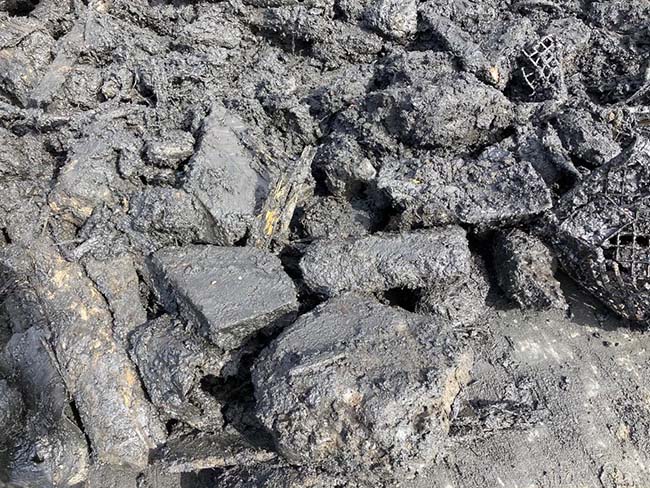
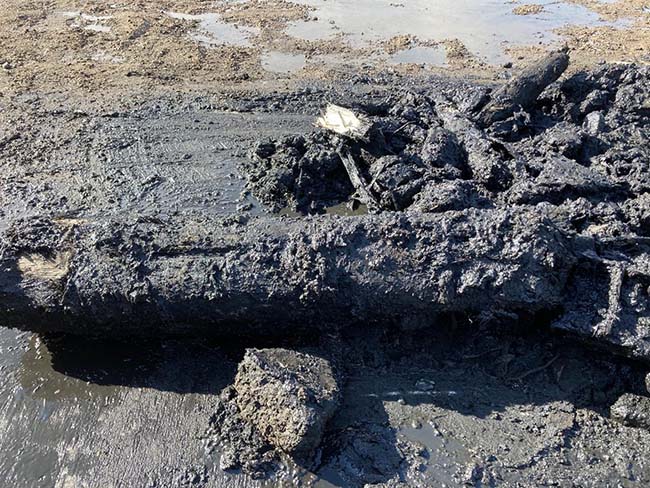
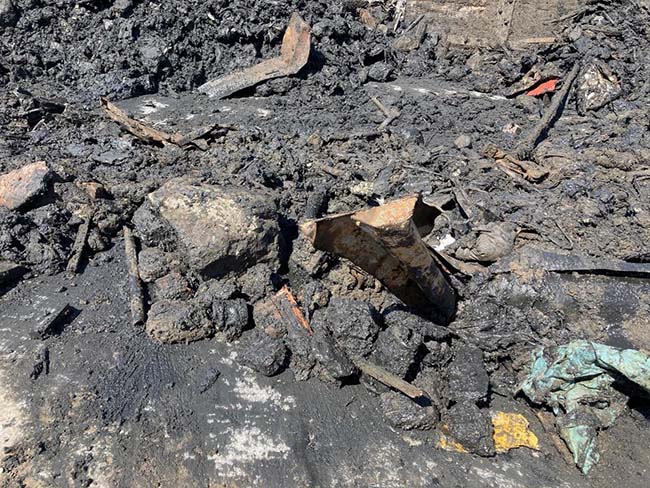
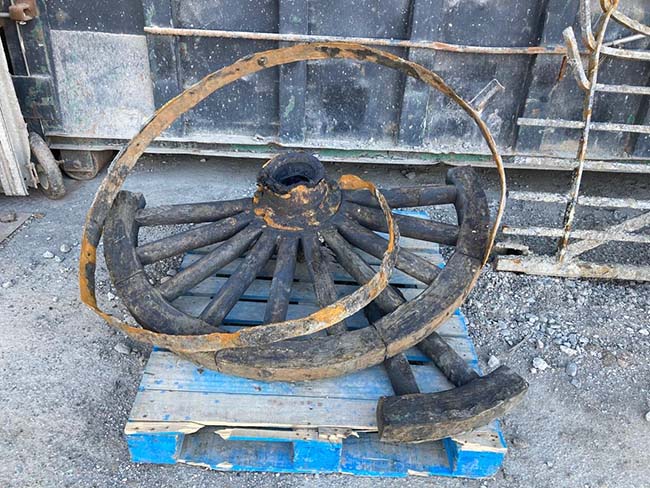
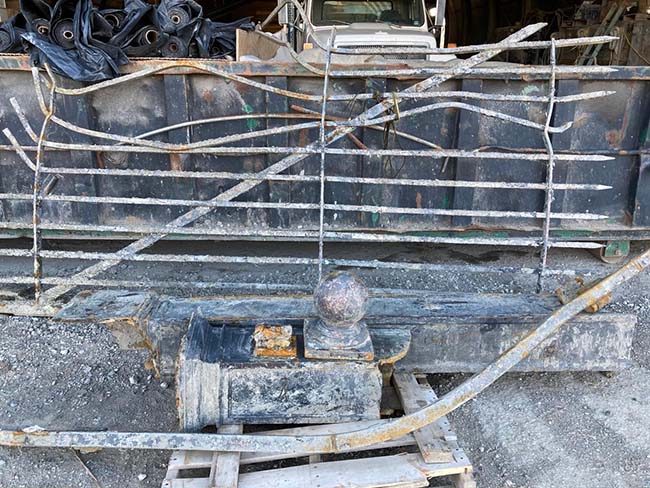
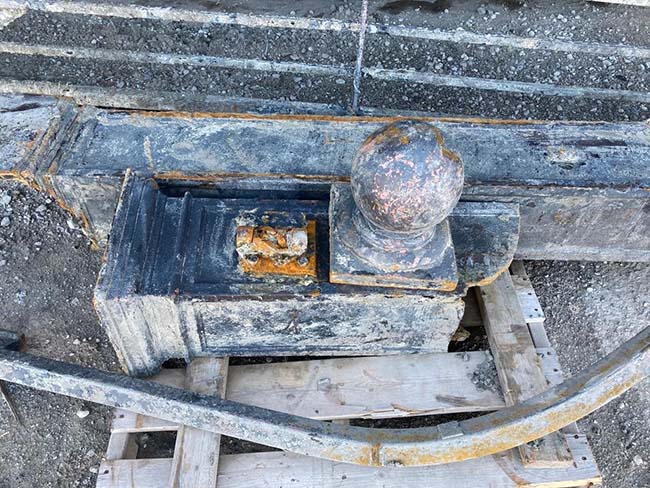
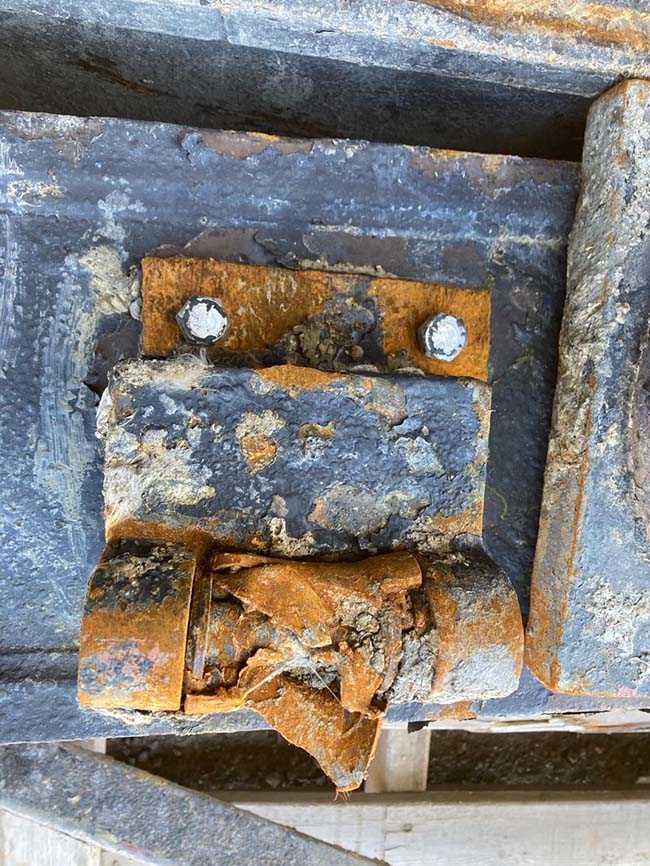

ITEMS SEPARATED FOR FURTHER REVIEW
The archaeologist retained three items for further analysis: the wagon wheel, the wrought iron fence and pillar and the smaller wrought iron fencing. The wagon wheel will be stored submerged in water to mitigate drying out. The metal items will be stored in the onsite shelter.
CONCLUSIONS AND RECOMMENDATIONS
The archaeologist concludes that three items observed during the sediment screening at the dredge material processing facility retain possible historic/archaeological significance. Per the draft Cultural Resource Monitoring Plan, the archaeologist further recommends that all the non-historically/archaeologically significant debris at the dredge material processing facility has been reviewed by the archaeologist as of 3/19/2021 may be disposed of.
